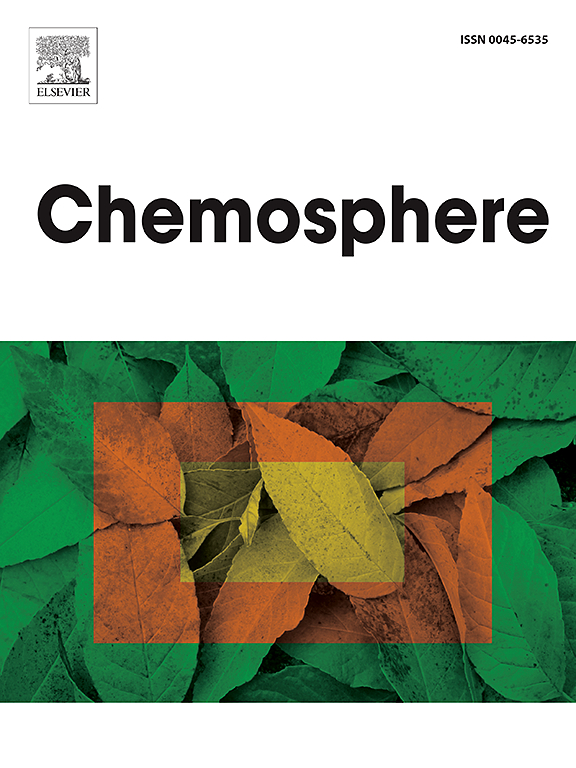佛罗里达赤潮和不良出生结果:调查有害藻类作为一种新的环境暴露
IF 8.1
2区 环境科学与生态学
Q1 ENVIRONMENTAL SCIENCES
引用次数: 0
摘要
藻类大量繁殖与人体健康不利有关,但人们对早期接触藻类知之甚少。这项生态学研究利用2016-2018年的“红潮”来调查对佛罗里达墨西哥湾沿岸居民出生结果的影响。我们估计了每年6月至10月短链乳杆菌的浓度和盛行风向。我们将这些数据与沿海人口普查区居民每月的早产、低出生体重期和总活产数进行时空关联。当当地水域的短链克雷伯菌超过各种阈值并且风吹向岸上时,该地区居民被认为是“暴露”的。采用交错差中差设计,我们比较了不同潜伏期情况下暴露前后的早产和足月低出生体重率。在200个沿海带中,85%的邻近水域短链乳杆菌超过10,000个/L。有陆上风的短链乳杆菌升高与每100个活产婴儿减少9.52个(95% CI: 14.70, - 4.70)个早产儿相关,尽管滞后关联在统计学上不显著。足月低出生体重模型,通常显示与短链乳杆菌的升高没有关联,有平行的趋势违反,因此结果应谨慎解释。由于红潮发生在温暖的季节,而高温会增加早产的风险,因此与红潮有关的气味和呼吸道刺激可能促使孕妇待在室内,以避免高温,这可能解释了观察到的保护作用。然而,缺乏个体水平的、时空精细的暴露测量可能会导致错误分类。未来的工作应侧重于改进暴露评估方法和控制天气干扰,以明确妊娠期赤潮暴露对健康的风险。本文章由计算机程序翻译,如有差异,请以英文原文为准。

Florida red tides and adverse birth outcomes: Investigating harmful algae as a novel environmental exposure
Algal blooms have been linked to adverse human health, but little is known about early life exposures. This ecologic study leveraged the 2016–2018 ‘red tide’ blooms to investigate effects on birth outcomes among Florida Gulf coast residents. We estimated K. brevis concentrations and prevailing wind directions from June through October annually. We spatiotemporally linked these data with monthly counts of preterm, term low birthweight, and total live births to residents of coastal census tracts. Tract residents were considered ‘exposed’ when K. brevis in local waters exceeded various thresholds and winds blew onshore. Using a staggered difference-in-differences design, we compared preterm birth and term low birthweight birth rates pre- and post-exposure under different latency scenarios. Among 200 coastal tracts, 85 % neighbored waters where K. brevis exceeded 10,000 cells/L. Elevated K. brevis with onshore winds was associated with a concurrent decrease of 9.52 (95 % CI: 14.70, −4.70) preterm births per 100 live births, though lagged associations were statistically insignificant. Models of term low birthweight, which generally showed null associations for K. brevis elevations, had parallel trends violations, such that the results should be interpreted with caution. Since red tides occur in the warm season and high temperatures can increase the risk of preterm birth, it is possible that bloom-related odors and respiratory irritation prompted pregnant residents to stay indoors, avoiding the heat and potentially explaining the observed protective effect. However, the lack of individual-level, spatiotemporally-refined exposure measurements likely introduced misclassification. Future work should focus on improving exposure assessment methods and controlling for confounding by weather to clarify health risks from red tide exposures during pregnancy.
求助全文
通过发布文献求助,成功后即可免费获取论文全文。
去求助
来源期刊

Chemosphere
环境科学-环境科学
CiteScore
15.80
自引率
8.00%
发文量
4975
审稿时长
3.4 months
期刊介绍:
Chemosphere, being an international multidisciplinary journal, is dedicated to publishing original communications and review articles on chemicals in the environment. The scope covers a wide range of topics, including the identification, quantification, behavior, fate, toxicology, treatment, and remediation of chemicals in the bio-, hydro-, litho-, and atmosphere, ensuring the broad dissemination of research in this field.
 求助内容:
求助内容: 应助结果提醒方式:
应助结果提醒方式:


